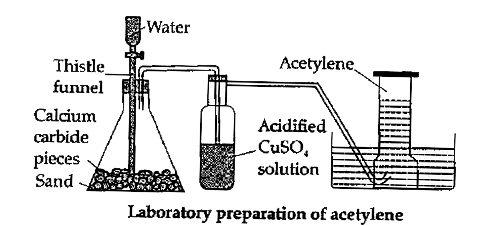Write the equations of the reactions which take place at the cathode and anode when acidified water is elctrolysed .
To solve the question regarding the reactions that take place at the cathode and anode during the electrolysis of acidified water, we can follow these steps:
1. Understanding Electrolysis:
- Electrolysis involves the decomposition of a substance by passing an electric current through it. In this case, we are looking at acidified water, which contains H⁺ ions (from the acid) and OH⁻ ions (from the water).
2. Identifying the Electrodes:
- The cathode is the negative electrode where reduction occurs (gain of electrons).
- The anode is the positive electrode where oxidation occurs (loss of electrons).
3. Reactions at the Cathode:
- At the cathode, H⁺ ions (from the acid) are attracted to the negatively charged electrode.
- The reaction can be represented as:
2H++2e−→H2(g)
- This means that two hydrogen ions gain two electrons to form hydrogen gas (H₂).
4. Reactions at the Anode:
- At the anode, OH⁻ ions are attracted to the positively charged electrode.
- The reaction can be represented as:
4OH−→2H2O+O2(g)+4e−
- This indicates that four hydroxide ions lose electrons to produce two water molecules and oxygen gas (O₂).
5. Final Summary of Reactions:
- At the Cathode:
2H++2e−→H2(g)
- At the Anode:
4OH−→2H2O+O2(g)+4e−
- Electrolysis involves the decomposition of a substance by passing an electric current through it. In this case, we are looking at acidified water, which contains H⁺ ions (from the acid) and OH⁻ ions (from the water).
- The cathode is the negative electrode where reduction occurs (gain of electrons).
- The anode is the positive electrode where oxidation occurs (loss of electrons).
- At the cathode, H⁺ ions (from the acid) are attracted to the negatively charged electrode.
- The reaction can be represented as:
2H++2e−→H2(g)
- This means that two hydrogen ions gain two electrons to form hydrogen gas (H₂).
- At the anode, OH⁻ ions are attracted to the positively charged electrode.
- The reaction can be represented as:
4OH−→2H2O+O2(g)+4e−
- This indicates that four hydroxide ions lose electrons to produce two water molecules and oxygen gas (O₂).
- At the Cathode:
2H++2e−→H2(g)
- At the Anode:
4OH−→2H2O+O2(g)+4e−
Similar Questions
Knowledge Check
Which of the following reaction does not take place at cathode ?
AAg+→Ag−e−BFe2+→Fe3++e−CCu2++2e−→CuDAl3+→Al−3e−
Write separate equations for the reactions which take place at the two electrodes when dilute sulphuric acid is electrolysed between two platinum electrodes .
View SolutionGive the reactions occurring at both cathode and anode.
View SolutionAn aqueous solution of NaCl is electrolysed with inert electrodes. Write the equations for the reactions taking place at cathode and anode. What happens if AgNO3(aq.) is used instead of NaCl?
View Solution
Write the equation to explain the reaction taking place in the above diagram?
View SolutionWrite the chemical equation of the reaction which takes place on burning ethanol in oxygen.
View SolutionWrite the equations for the reactions taking place at the two electrodes (mentioning clearly the name of the electrode ) during the electrolysis of
Acidified copper sulphate solution with copper electrodes .
(ii) Molten lead bromide with (graphite ) electrodes .
View SolutionName the reactions that take place at anode and cathode of the galvanic cell.
View Solution
